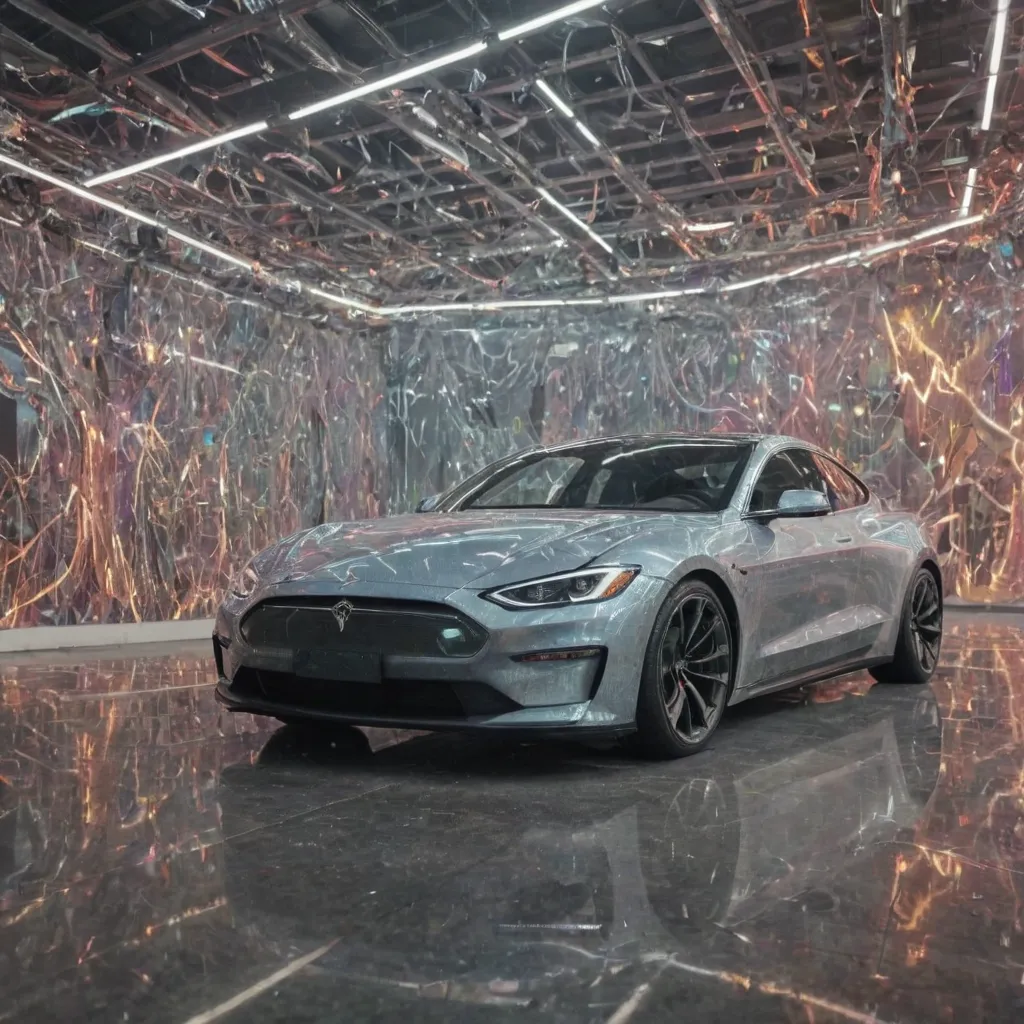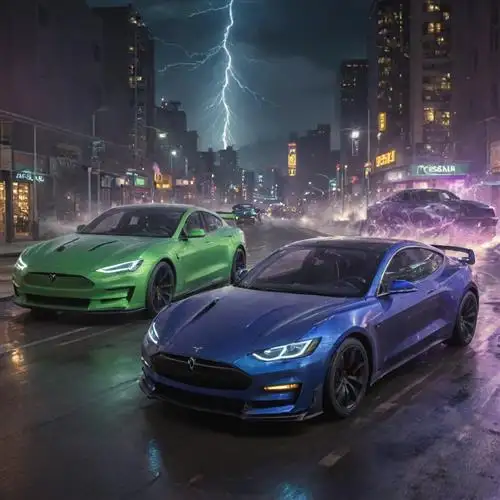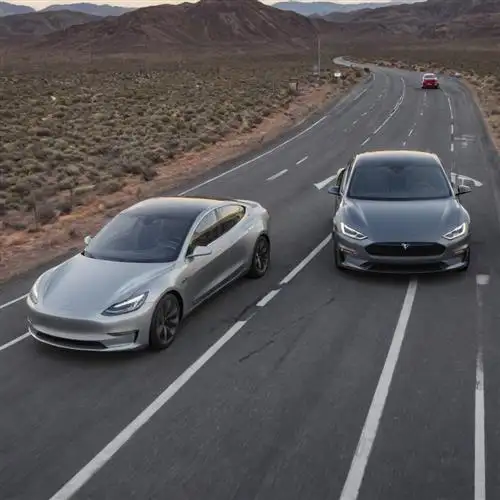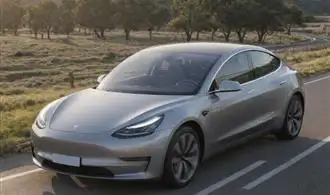
Powertrain and Performance
Powertrain and Performance: When it comes to the powertrain and performance, the Tesla Model 3 and the Ford Mustang Mach-E offer distinct and captivating experiences. The Model 3 boasts a dual-motor all-wheel-drive setup, delivering an impressive 430 horsepower and 471 lb-ft of torque in the top-of-the-line Performance variant. This translates to a blistering 0-60 mph time of just 3.1 seconds, making it one of the quickest production sedans on the market. The Mustang Mach-E, on the other hand, offers a unique blend of power and efficiency with its available all-wheel-drive system and a choice of battery pack sizes.
The base Mustang Mach-E with the standard-range battery and rear-wheel-drive configuration produces 266 horsepower and 317 lb-ft of torque, with a 0-60 mph time of around 5.8 seconds. Upgrading to the extended-range battery and all-wheel-drive setup increases the output to 346 horsepower and 428 lb-ft of torque, reducing the 0-60 mph time to approximately 4.8 seconds. The Mustang Mach-E GT Performance Edition takes things a step further, delivering 480 horsepower and 600 lb-ft of torque, with a 0-60 mph time of just 3.5 seconds, making it a true performance electric SUV.
In terms of driving dynamics, the Tesla Model 3 offers a more engaging and responsive experience, thanks to its low center of gravity, precise steering, and near-instantaneous torque delivery. The Mustang Mach-E, while not quite as nimble as the Model 3, still delivers a spirited and exhilarating driving experience, with a more refined and comfortable ride quality, particularly on longer journeys. Both vehicles offer regenerative braking, allowing for one-pedal driving and improved energy efficiency.
The efficiency and range of these two electric vehicles are also noteworthy. The Tesla Model 3 Long Range variant can achieve an EPA-estimated range of up to 358 miles, while the Mustang Mach-E with the extended-range battery and rear-wheel-drive setup can reach up to 305 miles of range. The charging capabilities of both models are impressive, with the Model 3 supporting up to 250 kW DC fast charging and the Mustang Mach-E capable of up to 150 kW DC fast charging.
Exterior Design and Styling
The Tesla Model 3 and the Ford Mustang Mach-E offer starkly contrasting approaches to exterior design. The Model 3's sleek, minimalist aesthetic exudes a futuristic and aerodynamic appeal. The smooth body lines, flush door handles, and lack of unnecessary ornamentation create a clean, sophisticated look that is quintessentially Tesla. In contrast, the Mustang Mach-E takes inspiration from the iconic Mustang, with a more muscular and athletic silhouette. The wide stance, sharply creased bodywork, and prominent grille give the Mach-E a bold, aggressive presence on the road.
When it comes to dimensions, the Model 3 presents a more compact and streamlined profile, measuring approximately 184 inches in length and 73 inches in width. This compact size contributes to its excellent aerodynamics, which are further enhanced by its smooth underbody and optimized airflow. The Mustang Mach-E, on the other hand, is slightly larger, measuring around 187 inches in length and 74 inches in width, reflecting its SUV-inspired design.
One notable feature of the Model 3's exterior is the absence of a traditional grille. Instead, the car features a closed-off front end, which not only enhances aerodynamics but also gives it a distinctive, futuristic appearance. The Mach-E, in contrast, retains a prominent grille, drawing inspiration from the classic Mustang design.
The wheels and tire choices also play a significant role in the overall aesthetic of these two electric vehicles. The Model 3 offers a range of alloy wheel designs, from the standard 18-inch to the available 19-inch and 20-inch options, all of which contribute to the car's sleek, performance-oriented look. The Mach-E, on the other hand, comes with a variety of wheel designs, ranging from 18 inches to 20 inches, allowing buyers to customize the vehicle's appearance to their personal preference.
Lighting is another important aspect of the exterior design. The Model 3 features LED headlights and taillights that blend seamlessly into the car's body, further emphasizing its clean, minimalist aesthetic. The Mach-E also boasts modern LED lighting, but its headlights and taillights are more pronounced, adding a touch of aggression to the overall design.
Interior Technology and Infotainment
The interior technology and infotainment of the Tesla Model 3 and the Ford Mustang Mach-E are two of the most striking features that set these electric vehicles apart. The Tesla Model 3 boasts a minimalist and intuitive touchscreen interface that controls nearly all the vehicle's functions, from climate control to entertainment. This 15-inch display is the centerpiece of the Model 3's cabin, offering a seamless and responsive user experience. The interface is clean and uncluttered, allowing drivers to access a wealth of information and features with ease.
In contrast, the Ford Mustang Mach-E offers a more traditional approach to its infotainment system, with a 15.5-inch touchscreen display that is complemented by physical buttons and knobs for commonly used controls. This hybrid approach provides a familiar feel for drivers transitioning from conventional vehicles, while still offering the benefits of a large, responsive touchscreen. The Mach-E's infotainment system is powered by the latest version of Ford's SYNC 4A software, which is widely praised for its intuitive layout and robust feature set.
Both the Model 3 and the Mach-E offer a suite of advanced connectivity features, including smartphone integration through Apple CarPlay and Android Auto, as well as over-the-air software updates that keep the vehicles' systems current. The Model 3, however, takes this a step further with its seamless integration with the Tesla mobile app, allowing owners to remotely control various vehicle functions, access real-time data, and even summon the car from a distance.
In terms of audio quality, the Tesla Model 3 comes standard with a premium audio system that delivers an immersive listening experience, while the Mustang Mach-E offers optional high-end audio upgrades from Bang & Olufsen. Both vehicles provide ample storage space for personal items, with the Model 3 featuring a large front trunk (or "frunk") and the Mach-E offering a versatile cargo area with a hidden compartment beneath the floor.
Range, Charging, and Efficiency
The Tesla Model 3 and the Ford Mustang Mach-E are two of the most prominent all-electric vehicles on the market, each boasting impressive performance and features. When it comes to range, charging, and efficiency, these two models showcase their respective strengths and cater to different consumer preferences.
The Tesla Model 3 has long been praised for its exceptional range, with the Long Range variant capable of up to 353 miles on a single charge. This impressive figure is a result of Tesla's advanced battery technology and continuous optimization of their electric drivetrain. The Mustang Mach-E, on the other hand, offers a range of up to 305 miles, depending on the variant, which is still a respectable figure but falls slightly short of the Model 3's capabilities.
In terms of charging, both vehicles offer fast-charging capabilities, but the Tesla Model 3 has a distinct advantage. The Model 3 is compatible with Tesla's extensive Supercharger network, which provides lightning-fast charging speeds, allowing owners to replenish their battery with up to 175 miles of range in just 15 minutes. The Mustang Mach-E, while offering fast-charging capabilities, is limited to the public charging infrastructure, which may not always provide the same level of convenience and charging speed as the Tesla Supercharger network.
When it comes to efficiency, the Tesla Model 3 once again demonstrates its engineering prowess. The Model 3 boasts an impressive efficiency rating of up to 141 MPGe (miles per gallon equivalent), which means it can travel more miles per unit of energy compared to the Mustang Mach-E. The Mustang Mach-E, while still efficient, falls slightly behind with an MPGe rating of up to 109.
It's worth noting that the Mustang Mach-E offers a unique all-wheel-drive configuration, which may appeal to some consumers who prioritize enhanced traction and performance in various driving conditions. This feature, coupled with the Mustang's distinctive design and brand heritage, could be a deciding factor for some buyers.
Pricing and Value Proposition
When it comes to the Tesla Model 3 and the Ford Mustang Mach-E, the pricing and value proposition are critical factors to consider. The base Model 3 Standard Range Plus starts at $39,990, while the Mustang Mach-E Select has a starting price of $42,895. However, it's essential to look beyond the base prices and examine the overall value each vehicle offers.
The Tesla Model 3 is known for its advanced technology, impressive performance, and industry-leading range. The base model can accelerate from 0 to 60 mph in 5.3 seconds, and it has an EPA-estimated range of 263 miles. Additionally, the Model 3 comes with Tesla's Autopilot driver-assistance system, which provides features like adaptive cruise control and lane-keeping assist. While the base price is slightly lower than the Mustang Mach-E, the Model 3 offers a more comprehensive suite of features and capabilities.
On the other hand, the Ford Mustang Mach-E caters to a slightly different market. It combines the iconic Mustang DNA with an all-electric powertrain, delivering a unique blend of performance and practicality. The Mustang Mach-E Select model has a 0-to-60-mph time of 5.8 seconds and an EPA-estimated range of 230 miles. While it may not match the Tesla's outright performance, the Mustang Mach-E offers a more affordable entry point into the world of electric performance vehicles.
When it comes to long-term ownership costs, the Tesla Model 3 may have an advantage due to its lower maintenance requirements and potential fuel savings. However, the Mustang Mach-E's pricing and incentives, such as the federal tax credit, can help offset the initial cost difference. Ultimately, the choice between the Tesla Model 3 and the Ford Mustang Mach-E will depend on the individual's priorities, budget, and personal preferences.
















